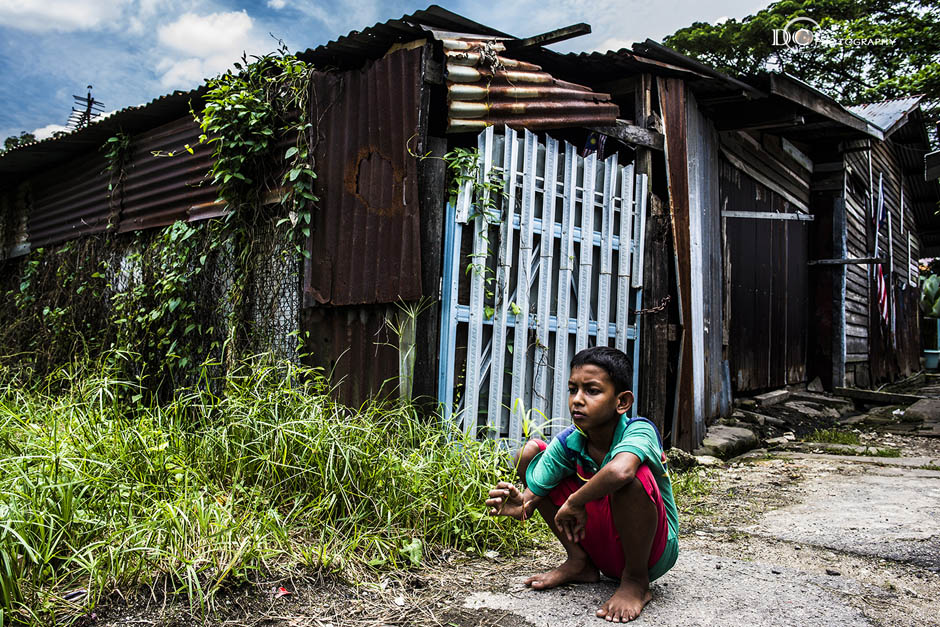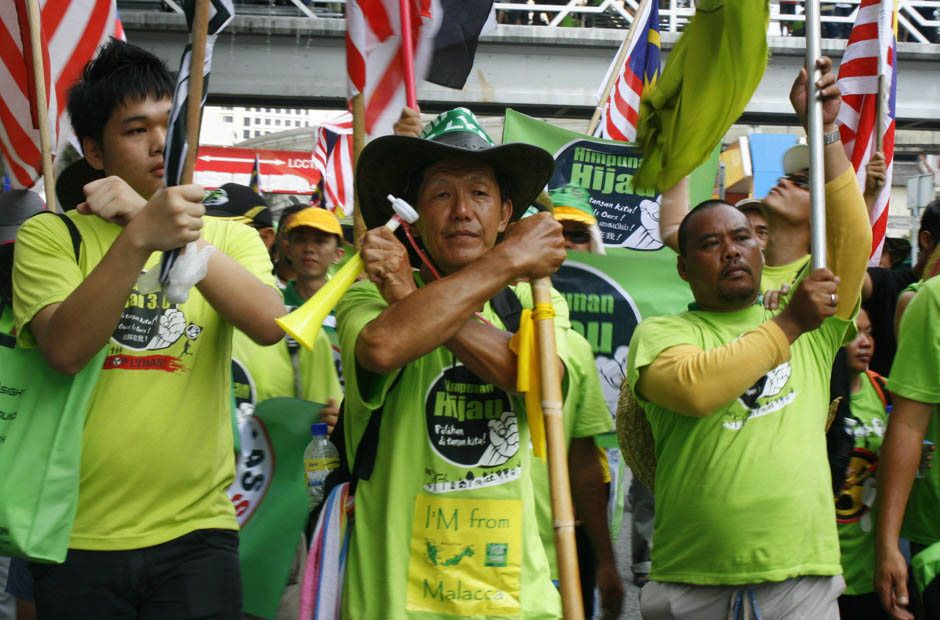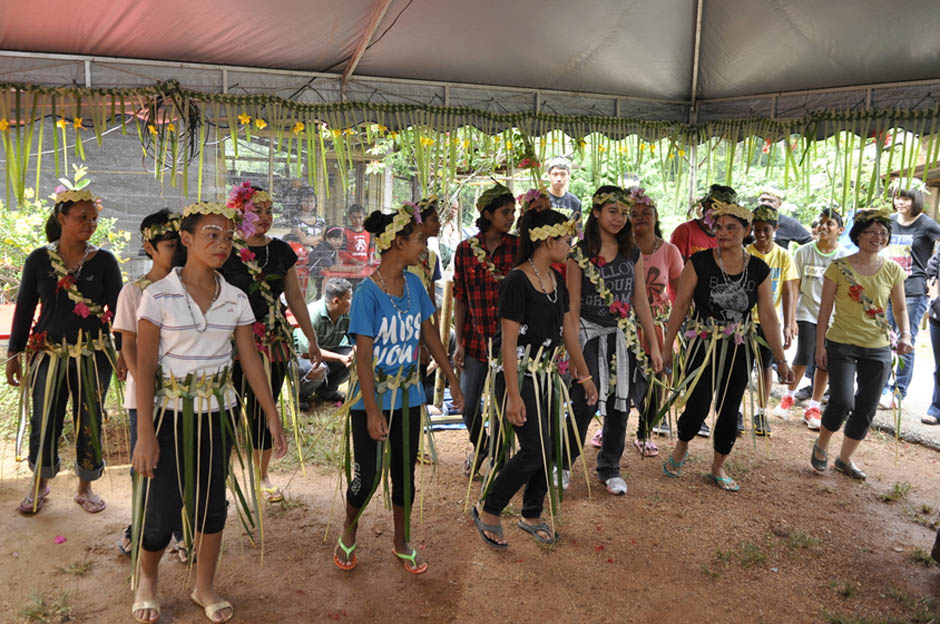| MUDA: Perspective from GE15 Data |
 |
 |
 |
| Thursday, 20 July 2023 14:53 |
MUDA: Perspective from GE15 Databy Danesh Prakash Chacko
Fashioned themselves as disruptor of status quo, MUDA has the prime chance to prove themselves as a disruptor or not for coming State Elections. While GE15 is now a political history milestone, it is worth looking the GE15 voting pattern to establish whether MUDA was a political disruptor or not. This article should not be seen as endorsement to any political parties.
LEADING UP TO GE15
MUDA, formed by Syed Saddiq, was born in the era of drastic political configurations of Sheraton Move and specifically within Bersatu. Syed Saddiq, whose membership terminated from Bersatu, set up in MUDA in late 2020. The party was finally registered in December 2021 and coincided with the implementation period of Undi18 (lowering the voting age to 18 and automatic voter registration). As a party that is multi-racial, youth focused and centred on progressive reforms, Johor State Elections provided the first test ground for MUDA (Johor State Elections of 2022 was the first elections where Undi18 voters was able to exercise the right to vote).
With the exit of Bersatu from Pakatan Harapan (PH) in 2020, 17 formerly DUN seats of Johor contested by Bersatu in 2018 is up for grabs by the current PH. MUDA and PH agreed to work together and DAP and Amanah agreed to assign their 6 former Bersatu DUN seats to MUDA. With PKR, the negotiations on the allocation of seats broke down and PKR and MUDA clashed in DUN Larkin (former Bersatu seat in 2018). The seven seats MUDA contested were mix of urbanization types and five seats were Malay Majority. This election and the clash provided key insights for MUDA’s performance. According to Bridget Welsh study entitled PKR vs MUDA, MUDA outshone PKR in its electoral performance throughout all age groups. At the same time, MUDA and PKR performed poorly among Malay voters in Johor. MUDA outperformed PKR across all ethnic groups with the exception of Indian community. Specifically, for Larkin, while combined MUDA and PKR will not change electoral outcome, MUDA outperformed PKR (in Larkin) in terms of electoral performance for voters of 30 years and below. MUDA won urban Chinese majority seat of Puteri Wangsa. While MUDA has been allocated to seats that mismatched its profile, Johor state elections provided a snapshot of their capability. Without losing their deposits and winning one seat, MUDA was able to contribute to Pakatan Harapan, which was defeated badly in that elections. Having said that, its inability to woo in new voting banks for PH raises the issue of misalignment between PH and MUDA.
GE15
Due to complications arising in admitting MUDA formally into Pakatan Harapan (which requires Registrar of Society approval), MUDA and PH entered into an electoral pact for GE15. MUDA was assigned to contest former Bersatu and Amanah contested seats of 2018 – Tanjung Piai, Muar (held by Syed Saddiq since GE14), Masjid Tanah, Tanjong Karang and Kepala Batas. Additionally, they were contesting in Kota Marudu in Sabah (once contested by Warisan in 2018). With specific focus on Peninsular Malaysia, the five Parliamentary seats Muda contested are Malay Majority and four of them are Semi Urban (and Tanjong Karang is a rural seat). As Majid Tanah detailed election results were not available due to election petition, let’s examine evolution of voting patterns of Kepala Batas, Tanjong Karang, Muar and Tanjong Piai. Kepala Batas is northern semi urban Parliamentary seat in Seberang Perai area of Penang. It has 29 polling districts. Due to overwhelming semi urban nature, voting patterns differences between urbanization class in GE14 and GE15 is likely insignificant. For both GE14 and GE15, three rural polling districts overwhelming voted for UMNO or PAS. When Amanah contested in GE14, its voting base was strong in semi urban areas and weaker in rural area. However, when MUDA contested in GE15, the reverse occurred where median support level for rural area for MUDA was higher than its semi urban counterparts. From ethnic perspective, Malay voter preferred UMNO and PAS over Amanah (GE14) and Muda (GE15). In Malay homogenous areas, voters switched from UMNO to PAS for GE15. MUDA, now tasked to bring collective votes for PH, lost ground in Malay majority areas (Malays constitute 80% of Kepala Batas voters). Meanwhile, MUDA was able to dominate Chinese majority polling districts in GE15, similar to what Amanah did in GE14. GE15 witnessed PAS dominating the youth voters (around 50%) which was a jump of 20% from GE14. Irrespective age groups, MUDA barely commanded 30% of the votes and there was no noticeable difference compared to Amanah’s situation in GE14. Out of seven polling districts won by Amanah in GE14, MUDA won four by plurality, two by majority and lost one area to PAS. Tanjong Karang is a rural Malay Majority seat in north western Selangor. It has 34 polling districts. When Bersatu contested under PH flag for GE14, their voting support was much stronger in urban area (around 45%) compared to its rural counterpart (slightly above 30%). When MUDA was tasked to contest this seat in GE15, similar pattern to Bersatu of GE14 took place but their voting support has declined (less than 20% in rural and around 35% in semi urban area). By switching to Perikatan Nasional, Bersatu support level shot up to 40% in rural area while experience minor decline in semi urban). From ethnic lens, MUDA’s Malay support is lower than Bersatu of GE14 and Bersatu wins strongly in very homogenous Malay polling districts. MUDA was able to more or less retain Chinese support (Chinese make up 17% of Tanjong Karang voters) that PH had in 2018. Similar to Kepala Batas, age of the voter made no difference to support level for MUDA. In GE14, Bersatu was a runner up for youth voters and after switched to Perikatan Nasional, they dominated rural youth voters outright. Out of the 14 polling districts won by Bersatu in GE14, MUDA was able to retain 10 polling districts and lost remaining four either to UMNO or Bersatu (now under Perikatan). Interestingly, MUDA pulled a minor victory by increasing PH related support in two hyper Chinese majority polling districts. Muar is a semi urban Malay Majority seat where President of MUDA first won the seat in GE14 (under Bersatu). It has 33 polling districts. Muar has a mixture of urbanized Muar township, semi urban fringes and rural territories. In GE14, Bersatu commanded more than 70% of the vote share in urban area, close to 55% of semi urban area and around 35% for rural areas. When MUDA contested in the same area, the support levels across different urbanization tiers dropped around 10 to 15%. PAS, not a strong political force in Johor historically, only commanded less than 15% across urbanization tiers in Muar (GE14). GE15 witnessed tables turned where PAS support jumped to more than 40% in rural areas and edging close to MUDA in semi urban areas. MUDA share of Malay votes declined when compared to Bersatu performance in GE14 (For example, a polling district with 50% Malay voters would give 60% support to Bersatu (GE14) but the same proportion of Malay voters would give only 50% support to MUDA (GE15)). MUDA’s decline in Malay vote bank grew strongly as Malay proportion grew in the area irrespective of urbanization class. MUDA was largely able to retain Chinese support base of GE14 with minor reductions. Irrespective of the age groups, MUDA support base was more or less the same. For Muar, MUDA dominates the urban youth voters but lost out to PAS for semi urban and young voters. PAS, once an insignificant third force in GE14 for Muar, became a tough opponent to MUDA in GE15. Out of 20 polling districts that Syed Saddiq won in GE14 (under Bersatu), Syed Saddiq of MUDA lost six of them to PAS. Bersatu won Temenggong Ahmad Selatan polling district comfortably in GE14 (62%) but MUDA lost the area (36%) to PAS. This is sharpest drop for PH related support in Muar. Syed Saddiq won Muar with thin margin of 1345 voters and his victory was saved by the presence of urbanized crowd in Muar. Tanjung Piai is a semi urban Malay Majority seat (with 40% of the voters are Chinese). It has 27 polling districts. Once a MCA seat, Bersatu won the seat in GE14 and lost the seat during the 2019 by-election to MCA. Tanjung Piai by election eventually paved the decision for Bersatu to leave PH. In GE14, Bersatu had strong support in semi urban areas (around 55%) but weak in rural areas (around 35%). MCA in GE14 was dominant force in rural area while PAS was an insignificant third factor. In GE15, MUDA commanded around 40% of the votes in semi urban area and slightly above 10% of votes in rural areas. MCA hold on rural areas in GE15 was weakened but retaining majority over these areas. Bersatu somehow retained its GE14 rural support in GE15 (with minor decline) but lose substantial grounds in semi urban area. From ethnic perspective, MCA largely commands the confidence of Malay voters in GE14 and GE15. Bersatu, which had problems in securing Malay votes in GE14, had different outcome in GE15 where it was in close competition with MCA. MUDA, on other hand, brought less Malay votes compared to Bersatu in GE15. MUDA was able to translate Bersatu support of GE14 to its side in GE15 with 10% decline. In GE14, MCA and Bersatu (PH) had close fight in securing youth vote banks. For GE15, Bersatu, MCA and MUDA faced strong competition in securing youth vote. Unlike Bersatu in GE14 where it commanded the majority support of semi urban youth, MUDA only commanded 40% of semi urban youth vote. Similar to other seats MUDA contested, MUDA support level is the same across the age groups. Out of 11 polling districts won by Bersatu in GE14, MUDA lost four of them to MCA in GE15. GE14 saw close corner fight between MCA and Bersatu for Tanjung Piai and GE15 witnessed three near equals competing the seat. From these four seats, MUDA’s support base is similar to other PH Component parties – non-Malays, urbanized crowd. MUDA has not demonstrated its appeal to youth voters unlike Perikatan Nasional (PAS and Bersatu) in GE15. With these facts in mind, these patterns may reinforce the view of misalignment of PH and MUDA’s interest. From PH perspective, MUDA may not be seen as party that value adds to their vote bank and perceived as competition to PH youth wings. From MUDA perspective, they should be given seats that they could win which are more urbanized in nature. They prefer not to contest in areas where their likely voting base is not strong enough.
Conclusion
While GE15 result itself could not be an ideal measurement for coming state elections, the GE15 results reinforces the views and strategies of MUDA. Hence, it is no surprise for anyone where MUDA is contesting for this state elections – largely urban seats and no surprise from long delays of PH to consider MUDA for state elections. It will be the state election of 2023 that will show whether MUDA will be disruptor to status quo or not.
Danesh Prakash Chacko is a Research Analyst with Jeffrey Sachs Center on Sustainable Development, Sunway University. He is also the director of Tindak Malaysia, an electoral reform group. This analysis work was made possible by assistance of Liang Jia Hui, a Tindak Malaysia volunteer. |
| Last Updated on Thursday, 20 July 2023 15:09 |







